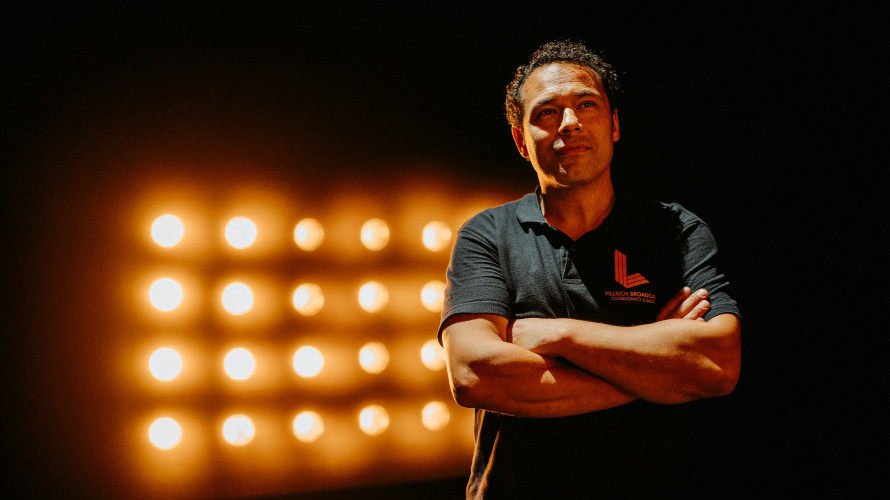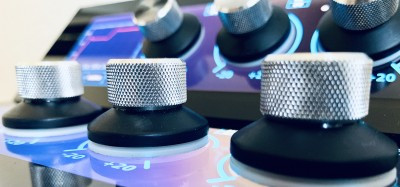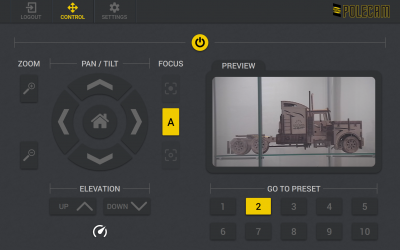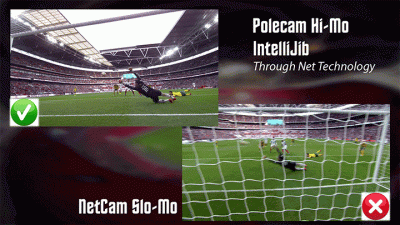Production Profile with Polecam

Author: Bob Pank#
Published 1st September 2011
What brings an innocent young Swede into the competitive high-adrenalin business of television production? In my case, it all began at school. I developed an early fascination for photography and created slide shows that were presented as end-of-semester happenings to my fellow students. Unlike television, you can actually watch a live slide-show audience. My productions were received with appreciation.
In the mid 1980s, one of my former teachers started a video production company. I started to work for him while still attending school and subsequently doing military service, something we had to do here back then. We produced films for companies, schools and various organisations.
Scuba diving is something that has interested me for a long time. As soon as I had gained my licence, I began taking underwater photographers and video.
When commercial television became established in Sweden during the 1990s, I was approached by a company called MTV (Mobile Television) which had won a contract to produce a game show for TV3. My task was to handle lighting for the first 140 Wheel of Fortune shows in Sweden.
TV3 gave more contracts to MTV and we built a studio in Jonsered, outside Gothenburg. I was employed for three years and worked like a madman, doing 200 to 300 hours a month.
During that time I got into all kinds of stuff. The company was growing and personnel were needed for all kinds of duties. I became studio manager and studio photographer at the same time. When a new production came in, I would be building studio sets and sometimes I was out on the field doing ENG productions.
New techniques were tried and different camera support devices tested. MTV bought a Jimmy Jib crane which gave me a lot of experience on game-shows, commercials, drama and newsgathering. I also trained as a Steadicam operator and did a few productions but I found that jibs were more my kind of thing.
After a busy spring and summer of 1993 with MTV, I decided to try develop my own freelance business. I visited the various production companies around Sweden and was soon working on various projects in and around Stockholm, with cranes, in studios and outside, ENG and OB.
Between studio and ENG productions, I travelled a great deal for sports events such as football and hockey. In 1995, Canal Plus started its Swedish operation and took up all the available freelancers, including me.
Enter Polecam
In late 1999, Johan Bernhagen, a producer at Canal Plus, told me a guy from Polecam was coming to Stockholm to demonstrate a revolutionary new mini jib. I attended the demo, tried the rig and we in turn demonstrated it to the other producers. They were rather hesitant about the quality of the camera. Then Polecam's Swedish dealer, Hoffman, told me they had one for demo. I took a test there and ordered one the same day.
My first Polecam job was for Red Bull, shooting home-made airplanes going into and (in most cases) coming back out of the water in the centre of Stockholm. The Polecam jib proved itself able to deliver pictures that simply could not be taken with any other camera support system.
In mid November 2000 I used the Polecam to cover the Cross-Country Skiing World Cup in Kiruna. At that time of year, daylight is available for just 20 minutes. The temperature was minus 20 Celsius and I was running on batteries. I had the rig running for four hours and only had to change batteries once.
The quality achieved the Polecam system at Kiruna impressed the producer and I was asked to cover the Alpine World Cup in re the following spring. This was a very special job. The distances involved were very long and we could not use a link. I took a trip to Top Teks near Heathrow. They helped me tune up my Camplex link and I bought the thickest cable that I still could carry and handle. This gave me a range of 1.3 kilometres.
Weather conditions were extreme and we had to move the camera position several times at very short notice. In 15 minutes I had moved 400 metres down as alpine course, skiing with the Polecam in the harness, preparing to shoot and connecting to the OB truck.
Swedist Television's sport producers has been eager to try the Polecam. Bo Lindqvist and Per Theorell wanted to try it in many sports such as hockey, basketball, freestyle skiing, figure-skating, dancing and horse jumping.
'The Mole' was an ENG production for TV5 made in 2000. I was using the Polecam with a Betacam SP recorder. The opening scene needed to show show participants descending via a rope from an 85 metre high shipping crane. My task was to televise them going over a fence and down: a breathtaking sequence that could not be captured with any other type of camera rig.
Nature film producer Kurt Skoog asked if it was possible to use Polecam to produce underwater pictures. I asked Polecam founder/MD Steffan Hewitt if he had a solution and he sold me a prototype FishFace that had been used at the 2000 Olympic Games in Sydney. The resultant programme won at least one film festival prize and we did more productions together.
Norwegian state television (NRK) had seen what we had done with alpine and cross-country skiing in Sweden and wanted to try Polecam.
I went there to some demonstrate the system for various sports. The result was that NRK bought three Polecam rigs.
In 2006 Sweden hosted the European Athletics Championships in Gothenburg. I was asked to provide two Polecams, one for use on the field and one in the SVT studio. I decided to buy my second rig. Using the Polecam on the field via a link and full remote and using the other one manually with a direct cable feed worked very well.
HD opens new doors
The following year, SVT asked me if I could deliver an HD signal to the 2008 World Figure-Skating Championships. I went to England and talked to Steffan, then bought a Toshiba IK-HD1 HD camera and fibre-optic link. The SD camera (Toshiba IK-TU61/63) was sold to a Polecam operator in Germany who needed one for 625-line productions.
HD had now entered my Polecam and had open new doors. Commercials producers become interested.
During the 2008 Olympics in Beijing, I despatched a Polecam with a new FishFace underwater camera housing to cover marathon swimming and the kayak slalom. Peter Frick, a Stockholm-based cameraman, operated the system because I was already booked as a Polecam operator for the athletics in the Beijing National Stadium (the 'Birds Nest').
First 3D shoot
In spring of 2010, a Gothenburg-based 3D production house called Resq asked me to do a 3D shoot for a medical company. This turned out well and we did Sweden's first ever live multicamera 3D transmission. This covered a hip operation and was relayed to an audience of 50 doctors.
In recent years the main driver for our Polecam work has been commercials, sports and the unusual: subjects that cannot be captured with ordinary camera support systems. This spring I was called in to work on a show in a studio that was too small to accommodate a crane. We provided almost the same pictures as a crane but the difference was that we got closer, worked faster and were able to get in closer.
This spring I have been busy with the Polecam covering football in Norway and filming both under and over water in a new nature reserve, the first of its kind in Scandinavia. We used Polecam to capture the detail of rock formations. For the underwater shots, I scuba-dived with a Canon 7D camera.
This summer we worked on the Swedish version of Gladiators using Polecam with a FishFace since there was a big pool that the participants could (and duly did) fall into. The pictures were unique. Using the rig both under and over water increased the feeling of presence and could not be taken in any other way.
My Polecam system is almost the same today as it was 12 years ago apart from a new fourth-generation camera and a new monitor. It has taken me places where I never could have gone with a crane or any other camera.



























